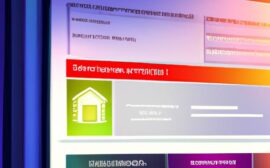Introduction
In the realm of homeownership, the term “home mortgage refinance rate” holds significant weight. But what exactly does it mean? In simple terms, a home mortgage refinance rate refers to the interest rate at which you can refinance your existing mortgage. This rate plays a crucial role in determining your monthly payments and the overall cost of your loan.
Understanding and comparing home mortgage refinance rates is paramount in ensuring you make informed financial decisions. By delving into the intricacies of these rates, you gain the power to potentially save thousands of dollars over the life of your loan. In this article, we will explore the factors influencing these rates, how to find the best rates, tips for negotiating lower rates, common pitfalls to avoid, and ultimately empower you to navigate the world of home mortgage refinancing with confidence. Let’s embark on this enlightening journey together.
Tips for Negotiating a Lower Home Mortgage Refinance Rate
Improving Credit Score
One of the most effective strategies for securing a lower home mortgage refinance rate is to enhance your credit score. Lenders typically offer better rates to borrowers with higher credit scores, as they are perceived as less risky. By paying off existing debts, resolving any errors on your credit report, and maintaining a good payment history, you can boost your credit score and increase your chances of qualifying for a lower rate.
Increasing Equity in the Home
Another tactic to negotiate a lower home mortgage refinance rate is to increase the equity in your home. Lenders often provide better rates to borrowers who have a higher equity stake in their properties. You can achieve this by making additional payments towards your mortgage principal, making home improvements that enhance the property’s value, or waiting for your home’s value to appreciate. By building equity in your home, you demonstrate financial stability and may be able to secure a more favorable refinance rate.
Negotiating with Lenders
When exploring refinancing options, don’t hesitate to negotiate with lenders to secure a better rate. Be prepared to present competitive offers from other lenders and leverage your creditworthiness and financial stability to negotiate for a reduced rate. Communication is key in this process, so make sure to clearly articulate your goals and be open to exploring different terms and options. By engaging in proactive negotiations, you can potentially secure a lower home mortgage refinance rate that aligns with your financial objectives.
Being Prepared to Walk Away
Lastly, it’s essential to be prepared to walk away if the terms offered by a lender do not meet your expectations. Don’t feel obligated to accept an offer that doesn’t align with your financial goals or that you’re not comfortable with. By being willing to walk away from a deal that doesn’t suit your needs, you retain control over your financial decisions and can continue exploring other options until you find a home mortgage refinance rate that works best for you.
Common Mistakes to Avoid When Refinancing a Home Mortgage
Falling for “Too Good to Be True” Rates
One common pitfall when refinancing a home mortgage is falling for rates that seem too good to be true. While low rates may initially appear enticing, it’s crucial to assess the overall terms of the loan. Some offers may come with hidden fees or adjustable rates that could significantly impact your finances in the long run.
Not Considering Long-Term Costs
When refinancing a home mortgage, it’s essential to look beyond the immediate savings and consider the long-term costs. Evaluate how the new loan terms will affect your financial stability over time. Factor in potential changes in interest rates, property values, and your personal financial situation to make an informed decision.
Ignoring Fees and Closing Costs
Another mistake to avoid is overlooking the fees and closing costs associated with refinancing. These additional expenses can add up and impact the overall cost-effectiveness of the new loan. Be sure to factor in all fees when comparing different refinancing options to ensure you’re getting the best deal possible.
Not Understanding the Terms of the Loan
One of the most critical errors to steer clear of is not fully comprehending the terms of the loan. Before signing any agreements, take the time to thoroughly review and understand the terms, including interest rates, repayment schedules, and any potential penalties. Clear communication with your lender and seeking clarification on any unclear terms can help prevent unwelcome surprises down the road.
Conclusion
In conclusion, the journey to finding the best home mortgage refinance rate is a crucial step towards achieving financial stability and freedom. By understanding the factors influencing these rates, conducting thorough research, considering all aspects of the loan, and seeking expert advice when needed, you can make informed decisions that will benefit you in the long run. Remember, the key lies in being proactive, knowledgeable, and willing to explore your options. Take charge of your financial future today by embarking on the path to securing the best home mortgage refinance rate for your needs. Your diligence and dedication will undoubtedly pave the way to a brighter financial horizon.



